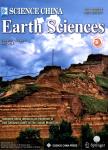Formation mechanism and model for sand lens reservoirs in the Jiyang Sub-basin,East China
Formation mechanism and model for sand lens reservoirs in the Jiyang Sub-basin, East China作者机构:Shengli Oil Field Ltd SINOPEC Dongying 257051 China University of Petroleum Beijing 102249 China Key Laboratory of Oil and Gas Accumulation Ministry of Education Beijing 102249 China Research Institute of Petroleum Exploration and Exploitation SINOPEC Beijing 100083 China
出 版 物:《Science China Earth Sciences》 (中国科学(地球科学英文版))
年 卷 期:2004年第47卷第Z2期
页 面:167-176页
学科分类:070904[理学-构造地质学] 0709[理学-地质学] 07[理学]
基 金:supported by the National Key Basic Research Project(973)(Grant No.G1999043310) the National Natural Science Foundation of China(Grant No.40172057) the National Tenth Five-Year Plan Project(Grant No.2001BA605A09)
主 题:sand lens reservoir, accumulation controlling factors, accumulation mechanism, accumulation model, Jiyang Sub-basin.
摘 要:The Bohai Bay basin comprises some very important and well documented subtle traps known in China, which have been the major exploration focus and have become a major petroleum play since the 1990s. However, recent exploration showed that the oil-bearing proper-ties of some sand lens reservoirs may vary significantly and the accumulation mechanisms for these lithological subtle traps are not well understood. Based on statistical analysis of oil-bearing properties for 123 sand lens reservoirs in the Jiyang Sub-basin and combined with detailed anatomy of typical sand lens reservoirs and NMR experiments, it has been shown that the structural and sedimentary factors, hydrocarbon generation and expulsion conditions of the sur-rounding source rocks, as well as the petrophysical properties of sand lens reservoirs are the main controlling factors for the formation of sand lens reservoirs. The formation of a sand lens reservoir depends on the interaction between the hydrocarbon accumulation driving force and the resistance force. The driving force is made up of the differential capillary pressure between sandstones and sources rocks and the hydrocarbon diffusion force, and as well as the hydro-carbon expansion force. The resistance force is the friction resistance force for hydrocarbons and water to move through the pore throats of the sand lens. The sedimentary environment, source rock condition and sand reservoir properties can change from unfavorable to favorable depend-ing on the combination of these factors. When these three factors all reach certain thresholds, the sand lens reservoirs may begin to be filled by hydrocarbons. When all of these conditions be-come favorable for the formation of sand lens reservoirs, the reservoir would have high oil satu-ration. This approach has been applied to evaluating the potential of petroleum accumulation in the sand lens reservoirs in the third member of the Neogene Shahejie Formation in the Jiyang Sub-basin.



